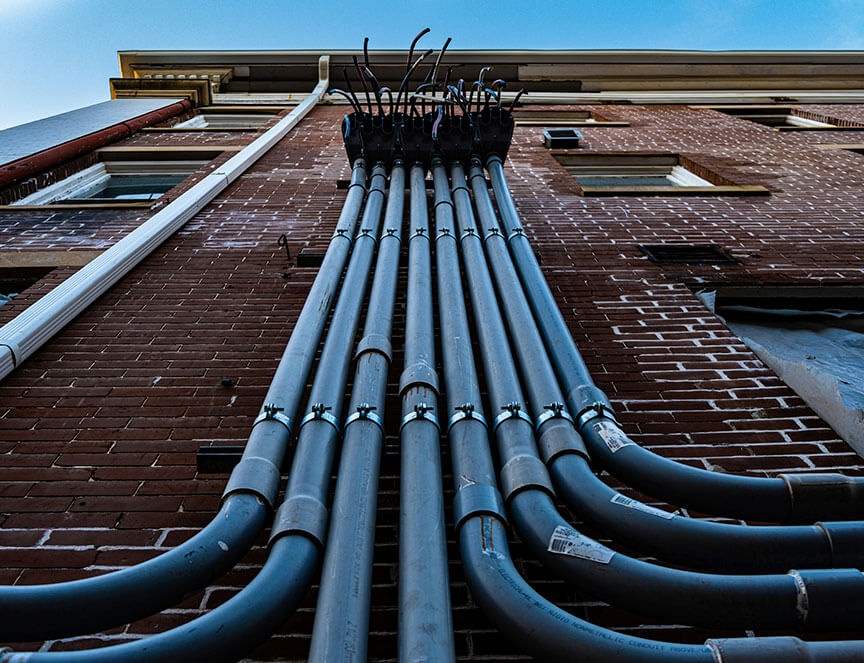Found an unexpected water feature at your home? If you have a leaking hot water system we bet you would be concerned! Leaking taps are so often a bad thing. But hot water systems are different! A hot water tank that has a leaking overflow pipe is not necessarily a bad thing. It’s possibly a good thing or possibly a bad thing! Confusing right? Well we can explain AND give you one simple method to try and fix a common cause for a hot water system leak.
Hot water systems
Hot water systems, whether electric or gas, have an overflow pipe that allows water to escape. It’s also called the relief valve. Water expands when heated, pressure builds up in the tank and is released through the overflow pipe. So water dripping or running from the valve can be a sign of a normal, functioning system.
However, not all leaking overflow pipes are occurring due to normal pressure build up. Sometimes the valve is relieving pressure that is building up for the wrong reasons. Or malfunctioning and relieving pressure that is not even there. This is when a leaking hot water system could be an indication of something wrong inside your tank.
The not good causes of a leaking hot water system
- Corrosion
- Loose drain valve
- Overheating through a malfunctioning part
- Old age of system
- Sediment build up
- Blockage in pipe
Sediment build up is common. Water contains minerals which can, over time, settle at the bottom of the tank. This affects the way water is heated and creates hot spots which can damage the tank.
The other common cause of an overflow pipe leaking is a blockage in the pipe, caused by small particles like sediment. Listed below is an easy way to try and fix that yourself.
But first, all those other causes listed above need a professional plumber to diagnose. Preferably a plumber with hot water system experience.
Secondly and VERY IMPORTANTLY, be careful with hot water. The following steps are simple but don’t burn or scold yourself, please.
Simple steps that may fix a blockage
- Turn off the gas or electricity supply to the system
- Turn off the water supply to the system
- Lift the valve open and shut a few times in a row. This can help any blockages to flow out of the pipe and get your drip fixed!
- Turn everything back on again.
It’s not fixed, now what?
Ok, if the valve is still continuously dripping or running, it’s time to call a plumber.
Don’t put it off. The well known TV show Mythbusters wanted to find out if a hot water system could explode. Check out the clip on youtube and see how far the tank flies!
Pressure really can build up!So a leaking overflow tap can be a normal function of your hot water system, relieving pressure so it doesn’t explode. It can also be a sign of an internal issue in your tank that needs to be repaired. Find a local plumber that deals with hot water system maintenance and ask for a free quote.
FAq's

What are the three most common types of plumbing in a home?
- Water Supply Lines:
Carry drinking water from the mains to faucets, showers, toilets, and other points of use. - Drain, Waste, and Vent (DWV) System:
Removes wastewater and gases from the sewer system, properly venting them to the outdoors. - Gas Lines:
Distribute natural gas or propane to appliances such as stoves, water heaters, and space heaters.
What are the most common types of pipes and fittings in home plumbing?
1- Pipes:
- Copper: Durable and corrosion-resistant. It is ideal for hot and cold water.
- PVC (Polyvinyl Chloride): It is inexpensive and common in cold water and drainage systems.
- PEX (Cross-linked polyethylene): It is a flexible and easy-to-install material. It is suitable for hot and cold water.
- Galvanized steel: It was once commonly used, but is now being replaced due to its tendency to corrode.
- ABS (Acrylonitrile Butadiene Styrene): This black plastic pipe is used in drains and ventilation.
- CPVC (Chlorinated PVC): It is very similar to PVC, but it resists high temperatures. It is very useful for hot water.
- Stainless steel: This type of pipe is highly resistant to corrosion and can be used in a variety of ways in the home.
- Black pipe: This is used for gas lines.
2- Fittings:
- Elbows: These change the direction of water flow.
- Couplings: Used to join two straight sections of pipe.
- Tees: Create a branch or branch in the line.
- Reducers: Used to connect pipes of different sizes.
- Unions: These facilitate easy disassembly.
- Bushings: Help reduce a larger pipe to a smaller one.
- Adapters: These allow connecting pipes of different materials.
- Caps: Allow the end of a pipe to be sealed.
- Plugs: Allows the sealing of a threaded opening.
- Flanges: Help connect pipes to equipment or systems.



